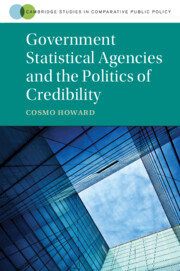Refine search
Actions for selected content:
20 results
19 - English Kingship in a European Context
- from Part V - Reflection
-
-
- Book:
- The Cambridge Companion to Late Medieval English Kingship
- Published online:
- 03 November 2025
- Print publication:
- 20 November 2025, pp 401-422
-
- Chapter
- Export citation
7 - Military finance, organisation, and state development, 1450–1650
-
-
- Book:
- The Cambridge History of War
- Published online:
- 18 July 2025
- Print publication:
- 14 August 2025, pp 191-204
-
- Chapter
- Export citation
7 - States, Subjects, Citizens
- from Part II - Notions and Practices of Equality
-
- Book:
- Democracy's Double Helix
- Published online:
- 09 September 2025
- Print publication:
- 14 August 2025, pp 161-170
-
- Chapter
- Export citation
The side effects of a big push growth strategy: export incentives and primary education under military rule in Brazil, 1967–1985
-
- Journal:
- Revista de Historia Economica - Journal of Iberian and Latin American Economic History / Volume 42 / Issue 3 / December 2024
- Published online by Cambridge University Press:
- 08 October 2024, pp. 387-414
- Print publication:
- December 2024
-
- Article
- Export citation
7 - Mediaeval Constitutions
- from Part II - The History of the Constitution
-
- Book:
- The Story of Constitutions
- Published online:
- 19 October 2023
- Print publication:
- 02 November 2023, pp 104-117
-
- Chapter
- Export citation
16 - Locality, Regionality and Centrality
- from Part II - Actors and Institution
-
-
- Book:
- The Cambridge Constitutional History of the United Kingdom
- Published online:
- 12 August 2023
- Print publication:
- 17 August 2023, pp 406-430
-
- Chapter
- Export citation
2 - Principles
-
- Book:
- Holding Out
- Published online:
- 31 March 2023
- Print publication:
- 20 April 2023, pp 60-90
-
- Chapter
- Export citation
5 - The State’s Institutional Rearrangements and International Investment Agreements
- from Part II - Formal and Informal Institutional Effects of Investment Treaties on National Governance
-
- Book:
- National Governance and Investment Treaties
- Published online:
- 29 June 2023
- Print publication:
- 13 April 2023, pp 147-185
-
- Chapter
- Export citation
2 - Australia
-
- Book:
- Government Statistical Agencies and the Politics of Credibility
- Published online:
- 05 March 2021
- Print publication:
- 18 March 2021, pp 53-78
-
- Chapter
- Export citation
5 - The United Kingdom
-
- Book:
- Government Statistical Agencies and the Politics of Credibility
- Published online:
- 05 March 2021
- Print publication:
- 18 March 2021, pp 138-166
-
- Chapter
- Export citation

Government Statistical Agencies and the Politics of Credibility
-
- Published online:
- 05 March 2021
- Print publication:
- 18 March 2021
Chapter Four - Contrasting Hierarchies of Settlement
-
- Book:
- Power and Place in Etruria
- Published online:
- 29 September 2020
- Print publication:
- 08 October 2020, pp 83-108
-
- Chapter
- Export citation
5 - The Prehistoric Cultures and Historic Past of South Sumatra on the Move
-
- Book:
- The Politics of Heritage in Indonesia
- Published online:
- 24 December 2019
- Print publication:
- 16 January 2020, pp 164-193
-
- Chapter
- Export citation
4 - Greater Majapahit: the Makings of a Proto-Indonesian Site across Decolonisation, 1900s–1950s
-
- Book:
- The Politics of Heritage in Indonesia
- Published online:
- 24 December 2019
- Print publication:
- 16 January 2020, pp 129-163
-
- Chapter
- Export citation
3 - Kenyatta, Land, and Decolonization (1961–1963)
-
- Book:
- Power and the Presidency in Kenya
- Published online:
- 11 October 2019
- Print publication:
- 31 October 2019, pp 95-114
-
- Chapter
- Export citation
Danebury and the Heuneburg: Creating Communities in Early Iron Age Europe
-
- Journal:
- European Journal of Archaeology / Volume 22 / Issue 1 / February 2019
- Published online by Cambridge University Press:
- 19 July 2018, pp. 67-90
-
- Article
- Export citation
Mission-Driven Adaptability in a Changing National Training System
-
- Journal:
- The Australian Journal of Indigenous Education / Volume 46 / Issue 1 / August 2017
- Published online by Cambridge University Press:
- 01 December 2016, pp. 54-63
- Print publication:
- August 2017
-
- Article
- Export citation
Limiting EU Powers: Articles I-9 Draft Convention
-
- Journal:
- European Constitutional Law Review / Volume 1 / Issue 1 / January 2005
- Published online by Cambridge University Press:
- 12 October 2004, pp. 92-98
-
- Article
-
- You have access
- Export citation
